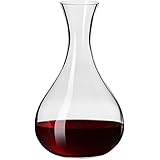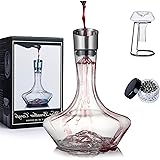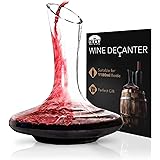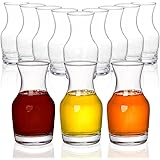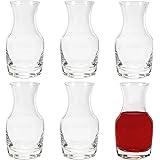With an estimated 350 official grape varietals, Italy offers unparalleled wine diversity. This vibrant landscape makes exploring Italian wines a truly unique adventure. As Jeff Porter beautifully illustrates in the video above, a journey through Italy’s wine regions reveals incredible discoveries. We tasted two remarkable wines. One was a rare white from Piedmont, and the other was a classic red from Tuscany. Let’s delve deeper into these exceptional bottles. We will learn what makes them so special.
Discovering Nascetta: Piedmont’s Forgotten Treasure
Piedmont is mostly known for its powerful red Barolos. However, it also hides a stunning white wine secret. That secret is Nascetta. This ancient varietal faced near extinction. Yet, it was gloriously rediscovered and revived. Specifically, Elvio Cogno himself brought it back to life. Today, only about 6 to 9 producers craft wine from Nascetta grapes. This makes it an incredibly rare find.
The Unique Character of Aged Nascetta
Many people assume Italian white wines are best enjoyed young. In contrast, Nascetta defies this common belief. It possesses a remarkable ability to age gracefully. For example, the 2012 Elvio Cogno Nascetta shows this perfectly. Its golden hue suggests oxidation. Yet, the wine itself remains vibrant and fresh. It is full of complex aromas. You might find notes of marzipan and almond. Tropical fruit notes, like starfruit and pineapple, also emerge. This wine is truly textural and visceral. It feels substantial on the palate. However, its bright acidity keeps every sip refreshing. Think of a rich dessert cut by a squeeze of fresh lemon.
Food Pairings for Nascetta
Nascetta is also incredibly versatile at the dinner table. Its richness handles creamy dishes. Its acidity cuts through fatty foods. In Piedmont, it pairs beautifully with vitello tonnato. This classic dish features thinly sliced veal. It has a creamy tuna sauce. Nascetta also complements burrata cheese perfectly. The wine’s brightness contrasts with the cheese’s gooey richness. Consider it with whole baked fish. Roasted pork and even macaroni and cheese are other great matches. Nascetta elevates these comfort foods.
Sangiovese: Tuscany’s Heartbeat in Rosso di Montalcino
Next on our giro is Tuscany, a region synonymous with iconic Italian wines. Here, Sangiovese is king. It is the backbone of legendary wines like Brunello di Montalcino. Rosso di Montalcino, like the 2015 Poggio Antico, is Brunello’s “baby sibling.” Both wines come from 100% Sangiovese grapes. However, Rosso ages for a shorter period. Some producers use younger vines for Rosso. Others declassify their Brunello-intended wine. If it doesn’t meet strict Brunello standards, it becomes Rosso. This decision does not diminish its quality. Instead, it offers a different expression of Sangiovese. It is often more approachable in its youth.
Classic Sangiovese Characteristics
Sangiovese is all about vivaciousness. It sings with bright, tart cherry flavors. Its acidity provides a lively structure. A key visual cue for Sangiovese is its translucence. You should always be able to see your finger through a glass of pure Sangiovese. If it looks “dark as night,” it might contain other grapes. The Poggio Antico Rosso di Montalcino exemplifies this clarity. On the nose, it offers ripe Morello cherries. You might detect sweet hay or crunchy leaves. Delicate sweet spices like cinnamon and clove add complexity. The wine ages in large 500-liter tonneaux barrels. These are bigger and rounder than typical barriques. This size allows for gentle oak integration. This preserves the grape’s delicate fruit flavors. This is unlike smaller barrels, which can impart more intense oak notes.
The Sangiovese Palate and Food Friendliness
On the palate, this Sangiovese is bright and vibrant. It delivers crushed sour cherry notes. Fine acidity and elegant tannins create a balanced experience. These tannins are felt in the mid-palate. They provide a delightful “crunchiness” to the wine. This structure makes Sangiovese incredibly food-friendly. While your Brunello ages, Rosso di Montalcino offers immediate enjoyment. It’s a quintessential “hamburger wine.” It’s also perfect for pasta night or pizza night. Even Tuesday taco night becomes special with this versatile red. Jeff boldly claims Sangiovese “kicks ass on food pairing.” This makes it a serious contender against other popular food wines like Pinot Noir. Its versatility and robust flavors make it an excellent choice.
The Visceral Appeal of Italian Wines
What truly sets Italian wines apart is their “visceral” quality. Many wines engage the brain first. You analyze their aroma, structure, and terroir. In contrast, Italian wines often move you emotionally. They connect with your heart immediately. They evoke a feeling, a memory, a sense of place. This direct, innate connection washes over you. It’s like tasting history and passion in every glass. Nascetta, a revived ancient grape, embodies this. Sangiovese, deeply rooted in Tuscan tradition, also shares this spirit. This immediate connection to the land and culture is truly special. It defines the Italian wine experience.
Embracing the Diversity of Italian Wine
Italy is a true rainbow of flavors. It offers a diversity that few other wine regions can match. From Piedmont to Tuscany, every region holds unique treasures. Jeff Porter likened it to the “Skittles of the wine world.” This metaphor perfectly captures its endless variety. Each sip offers a new color, a new taste, a new experience. These two wines, Nascetta and Sangiovese, represent just a tiny fraction. Yet, they showcase the immense range of outstanding Italian wines available. So, next time, venture beyond the familiar. Explore the rich tapestry of Italian wine. Discover your next favorite bottle.


